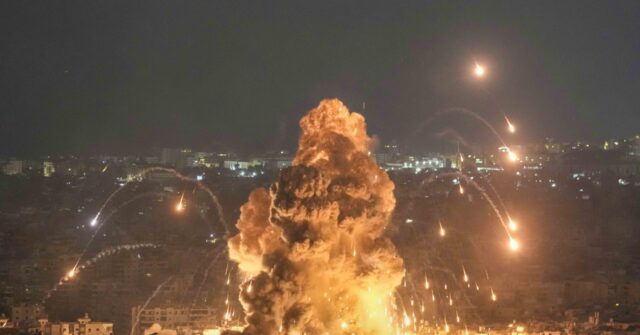The recent focus of Israeli military operations in Lebanon has increasingly concentrated on Dahiyeh, a neighborhood in southern Beirut that has been transformed into a stronghold for Hezbollah. According to Rear Admiral Daniel Hagari, the Israel Defense Forces (IDF) spokesperson, Dahiyeh is not just another area in the city; it effectively serves as a military base for Hezbollah. The Israeli military aims to eliminate threats posed by the militant group, which has been engaging in aggressive tactics against Israel for nearly a year. Since the Israeli security cabinet’s decision to prioritize the safe return of northern residents to their homes, the IDF has directed its airstrikes specifically at Hezbollah positions in both southern Lebanon and Dahiyeh.
Hagari has emphasized the importance of Dahiyeh in Hezbollah’s military operations, noting that the group exercises strict control over access to the area. This has allowed Hezbollah to operate covertly, placing headquarters and weaponry within civilian infrastructures such as residential buildings and commercial centers. The neighborhood is characterized by a heavy military presence, resulting in significant limitations on the freedom of movement for local residents, as Hezbollah has influenced public discourse and control over social media. Consequently, the civilian population’s exposure to conflict has been manipulated to serve the group’s narrative, resulting in strained relations between them and the Israeli military.
During recent military actions, the IDF has reportedly conducted precise airstrikes targeting crucial assets within Dahiyeh. Some of these operations have resulted in significant outcomes, including the reported elimination of high-profile Hezbollah figures, such as Hassan Nasrallah, and the destruction of advanced weaponry stockpiles. Important facilities associated with weapon production and intelligence have also been targeted. This focused approach aims to dismantle Hezbollah’s operational capabilities without indiscriminately harming the broader population of Lebanon, as Israel seeks to differentiate between its military objectives and civilian residents.
Critics of Israel’s military tactics have accused it of engaging in large-scale destruction of civilian infrastructure, with organizations such as Al Jazeera labeling these strikes as disproportionate. However, the IDF maintains that its operations are guided by precision and accountability. The Israeli military often preemptively shares information about intended target areas and encourages local residents to evacuate before strikes are executed. This strategy is part of Israel’s broader effort to convey that its conflict is not with the Lebanese populace but is instead aimed at combating Hezbollah’s military actions.
Israeli officials, including Prime Minister Benjamin Netanyahu, have sought to communicate a message of solidarity to the Lebanese people. In a recent video, Netanyahu lauded Lebanon’s cultural and historical significance, referring to it as the “pearl of the Middle East.” He called upon the Lebanese to reject the influence of Hezbollah and Iran, advocating for unity under a single national identity. This rhetoric indicates Israel’s intention to foster a narrative that distinguishes between Hezbollah’s militant activities and the aspirations of ordinary Lebanese citizens for peace and stability.
In the context of ongoing military engagements and heightened tensions in the region, understanding the dynamics at play in Dahiyeh is crucial. The area’s transformation into a fortified military zone by Hezbollah symbolizes both the challenges Israel faces and the complexity of its airstrike strategy. By asserting that its actions in Dahiyeh are carefully calculated rather than indiscriminately destructive, Israel aims to mitigate criticism while also striving for its strategic military goals. Ultimately, the conflict in Lebanon reflects broader geopolitical struggles, as regional actors navigate difficult relationships against a backdrop of violence and enduring enmity.

